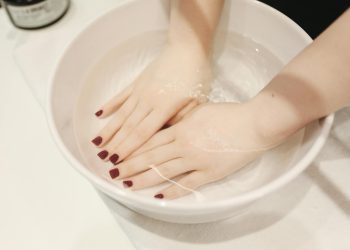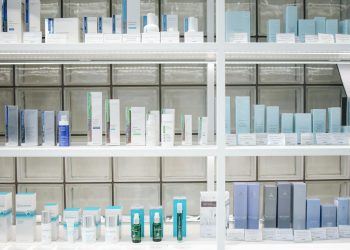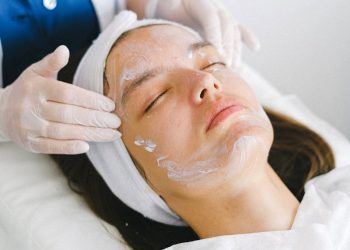In the age of overwhelming beauty trends and endless product launches, skincare has become both a cultural obsession and a source of confusion. From 10-step Korean routines to minimalist approaches championed by dermatologists, the path to healthy skin is rarely straightforward. Yet at its heart, effective skincare isn’t about chasing fads or replicating someone else’s routine—it’s about building a ritual that respects your skin’s unique needs, adapts to your lifestyle, and nurtures consistency over perfection.
A well-crafted skincare routine doesn’t just improve your complexion—it can restore confidence, promote self-care, and serve as a calming anchor in daily life. But how do you craft a routine that genuinely works? That question is less about copying influencers and more about tuning in to your own biology, habits, and environment. Let’s break it down.
1. Know Thy Skin: The Foundation of Any Routine
The first and most critical step in building an effective skincare routine is understanding your skin type. Are you dry, oily, combination, or sensitive? Do you experience frequent breakouts or redness? Does your skin change with the seasons?
Skin types are not fixed identities—they shift over time due to age, climate, hormones, and diet. A teenage oily T-zone can become drier in adulthood. Winter skin might crave hydration, while summer may require oil control. By tuning into these changes, you can build a responsive, rather than rigid, routine.
Many people make the mistake of using products meant for someone else’s skin. They follow what’s popular instead of what’s personal. Start with a clean slate—literally. Go makeup-free for a day or two, and observe how your skin behaves. Does it feel tight and flaky? Do you shine by midday? Is it prone to irritation when exposed to new products? Knowing this sets the stage for real results.
2. Simplicity Over Hype
A routine doesn’t need to have seven serums and four creams to be effective. In fact, layering too many active ingredients can do more harm than good. Start simple: cleanser, moisturizer, and sunscreen. These three essentials form the foundation of any good routine.
- Cleanser: Pick one that suits your skin’s condition. Gel-based for oily, cream-based for dry, and fragrance-free if you’re sensitive. Avoid harsh soaps or alcohol-heavy products.
- Moisturizer: Hydration is crucial for all skin types—even oily. The goal is to maintain your skin’s natural barrier.
- Sunscreen: This is non-negotiable. UV damage is the number one cause of premature aging, pigmentation, and even acne flare-ups. Use it daily, rain or shine.
Once your skin adapts to these basics, you can add treatments like exfoliants, retinoids, or vitamin C serums—one at a time, slowly.
3. Understand Ingredients, Not Just Brands
Marketing has a way of making certain ingredients seem magical—snail mucin, hyaluronic acid, niacinamide. But knowledge is power. The more you understand how ingredients work, the less you’ll fall for the hype.
For example:
- Salicylic acid unclogs pores and is ideal for acne-prone skin.
- Retinol boosts cell turnover and targets aging and texture but can cause irritation without careful introduction.
- Ceramides help rebuild the skin barrier and retain moisture—especially helpful in colder months.
Rather than building your routine around trending products, build it around your skin’s needs and the ingredients that address them. A $10 drugstore cream with the right formulation is often more effective than a $100 luxury item that’s all fragrance and little function.
4. Consistency is King
Even the most scientifically sound skincare product won’t work overnight. Your skin regenerates over a 28-day cycle on average, which means results take time. Stick with a new routine for at least 4–6 weeks before evaluating its effectiveness.
Many people jump from product to product, hoping for instant fixes. This constant experimentation can throw your skin into chaos. Instead, allow products time to settle in and do their job. If you’re introducing actives like acids or retinol, start slowly—two to three times a week—and increase usage gradually.
Think of skincare like a relationship—it requires patience, observation, and trust. Don’t ghost your moisturizer after three days.
5. Listen to Your Skin, Not Just the Internet
Skin is a living organ. It speaks through breakouts, redness, tightness, glow. Learn its language. If your face feels dry and tight after cleansing, your cleanser may be too harsh. If you’re suddenly breaking out after introducing a product, it could be purging—or it might be irritation. The difference matters.
The online skincare world is a noisy one. Reddit forums, YouTube channels, TikTok tips—they’re informative, but also overwhelming. Everyone’s skin is different. What works for a 22-year-old influencer with no history of acne might wreak havoc on mature or sensitive skin.
Keep a skincare journal if needed. Note what products you use, when you use them, and how your skin reacts. This kind of tracking can reveal patterns that no influencer ever could.
6. Adjust for Lifestyle and Climate
Your environment matters more than you think. A routine that works beautifully in humid Bangkok might fail in dry Colorado. Cold winters dry the skin, requiring richer creams and gentler cleansers. Sweat, pollution, and stress levels also influence how your skin behaves.
If you work night shifts or live in an urban center, your routine might need antioxidant protection and deeper nighttime hydration. Athletes may require frequent cleansing and barrier repair. Pregnant individuals often need to avoid certain actives altogether.
Customization isn’t a luxury—it’s a necessity. Your skincare should evolve with your life.
7. Skincare as Self-Care
Beyond clear skin, a good skincare routine offers something just as important: mindfulness. Taking ten minutes at the start or end of your day to care for yourself, to check in with how you feel, to engage in a tactile, soothing ritual—it’s powerful.
For some, it’s the warm water and soft lather. For others, the silky slide of a moisturizer or the cooling calm of a face mist. These moments ground you, offer structure, and promote self-worth. In this sense, skincare becomes more than maintenance—it becomes meditation.
8. Know When to See a Professional
Finally, no amount of at-home products can replace the insight of a trained dermatologist. If you’ve struggled with persistent acne, eczema, rosacea, or scarring, get expert help. DIY routines can only go so far, and the wrong approach can sometimes worsen the problem.
Professional advice helps you cut through the noise and tailor your routine with precision. It can save you time, money, and emotional distress.











